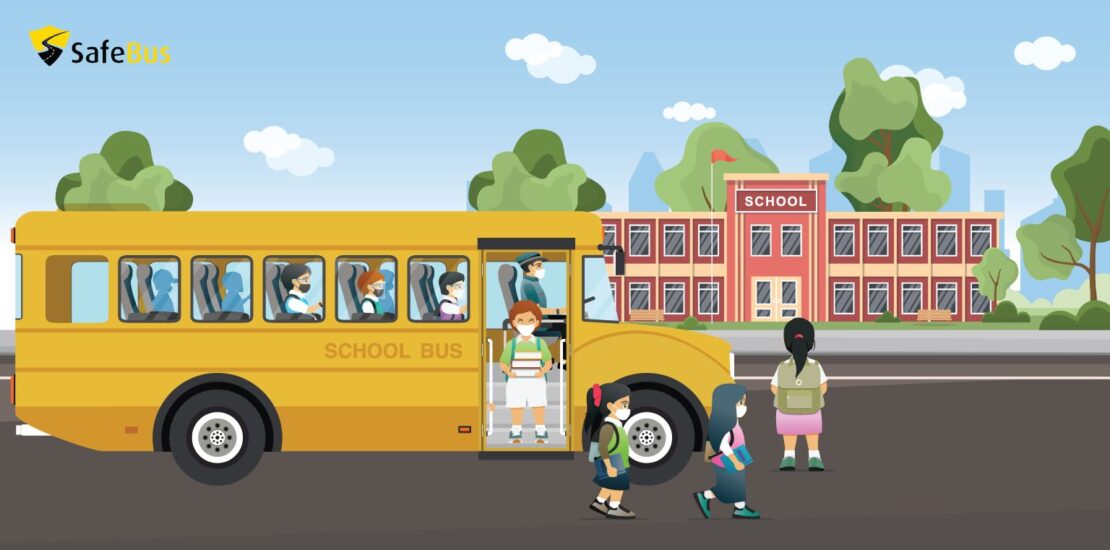- July 30, 2021
- Posted by: Satvir
- Category: Blog

The delta variant of COVID-19 has everybody worried from experts and administrators to parents and children, with the latter comprising a high-risk group. The CDC’s recent recommendation for people in ‘red zones’ to resume mask-wearing in indoor public spaces has reinforced the severity of the risk being faced by everybody, at least until more than 70% of the entire population are fully vaccinated. Against this backdrop, the increased risk of exposure in schools is sure to give pause to parents who had begun sending their children back to school following the phased re-opening during the past few months.
Schools are crowded places and the risk of transmission through respiratory droplets at such places is high. To address this contingency, the CDC has stressed the need for the implementation of layered prevention strategies, including universal and correct masking for all and maximization of physical distancing. But how are school admins, managers, faculty, and staff to ensure that all students follow the safety guidelines? At the same time, how can they identify cases of violation of safety rules and intervene immediately, if not proactively?
This is where digital technology can step in to address operational bottlenecks and ensure a robust implementation of, as well as compliance, with safety protocols.
Managing safety within school premises
Tech-enabled school management systems integrated with connected video surveillance solutions, for instance, can help school admins, faculty, and staff to drive smart and unobtrusive monitoring of the premises. Powered by AI, machine learning, deep learning, and analytics, advanced solutions available in the market today can be easily and seamlessly integrated into the existing monitoring hardware. The smart video analytics platform JARVIS by Staqu can mine through the massive amount of video data and quickly identify any potentially hazardous behavior or violation of safety rules by an individual or a group.
School management systems equipped with crowd monitoring and analytics capabilities can raise an alert whenever identify a gathering of more than four or any specified number of individuals. These systems can also detect people who are wearing their masks incorrectly or not wearing them at all. Real-time identification of safety protocol violations can enable managers to respond swiftly with remedial interventions.
Besides monitoring, school managers can use tech-led systems to automate scheduling and documentation of processes such as surface sanitization, temperature checks at entry and exits, maintaining student rosters, etc. Automation disburdens teachers and staff from engaging in routine and repetitive tasks, allowing them to focus on their KRAs while acting as supervisors and stepping in as and when required.
However, ensuring safety and security within the school building is only half the battle won. The other half, which is more challenging and equally critical, is making sure that the students are safe during the commute to and from school. Fortunately, digital school bus fleet management solutions such as SafeBus can empower transport personnel to make fleet management operations safer, securer, and more efficient.
Click here to know Why digitized fleet management is the need of the hour?
Delivering a safer and securer commute experience through SafeBus
Transport managers and school admins are aware of how daunting the task at hand is. Being a closed space, it is essential that students maintain adequate physical distancing and do not remove their masks inside the school bus. The need for a supervisor onboard is offset by the need to ensure minimum occupancy within the bus in the interest of physical distancing. The CDC recommends that the seating capacity be limited to one child per row in nonadjacent seats, which amounts to about 12 students per bus.
The automated platform of SafeBus can be integrated with in-vehicle cameras, allowing transport managers to inform the school bus driver in case of any misconduct. Remote monitoring can enable school buses to run on minimum occupancy while ensuring that no student is left disenfranchised.
On the operational front, transport managers must now revamp the way they create and implement routes for the school bus to ensure that no vehicle passes through a COVID-19 hotspot. SafeBus leverages the power of AI, machine learning, analytics, IoT, and algorithms to drive enhanced route planning and optimization. Drawing on historical and real-time data sourced from geofencing, GPS, and the internet, the platform can automatically identify, design, and implement the most time-efficient and COVID-free route for each school bus in the fleet.
Click here to know Why driver satisfaction is important in the post-pandemic world?
The tech-led platform can also automate the bus cleaning, sanitization, and maintenance schedules, ensuring that each school bus in the fleet is optimized in terms of efficiency and safety. It also allows transport admins to run regular temperature checks for all the students traveling on the school bus. In case a COVID+ case is identified, the digital roster feature allows for swift and efficient contact tracing in favor of quicker contamination.
Finally, the SafeBus platform offers customized applications for parents, students, and transport admins, allowing each of these groups to receive relevant notifications and updates in real-time. For instance, parents and guardians can live track their wards through their application while getting updates on their boarding/deboarding status and ETAs. Students can use their applications to raise an SOS alarm in case of any contingency to alert transport admins and parents, enabling them to intervene immediately.
Considering that the pandemic is far from over, the need for ramping up the scale and efficacy of layered preventative measures has emerged as a critical imperative for school administrators. By integrating advanced technologies into their COVID-19 prevention framework, they can deliver peace of mind to parents, guardians, and caregivers about the safety and security of their wards.
